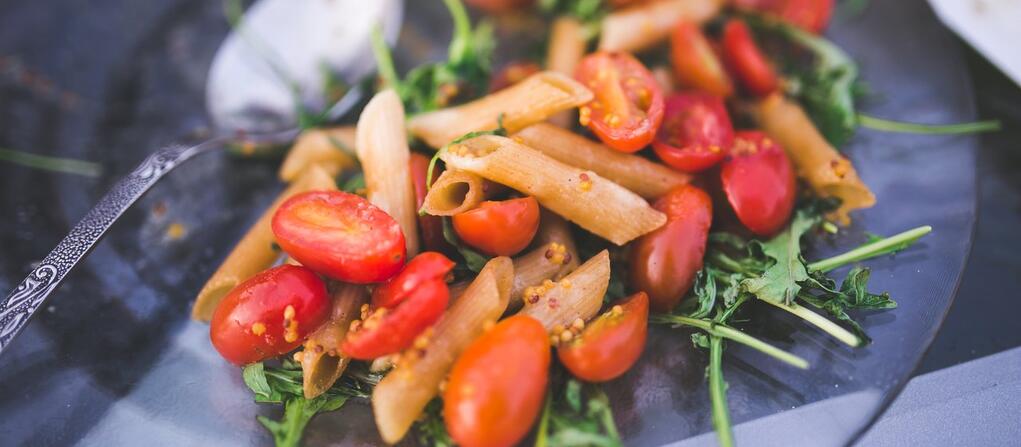
September 25, 2020
Despite animal-based proteins becoming notorious for their environmental impacts, moving to a plant-based diet may feel intimidating, especially to those of us who grew up with meat as the focal point of most meals. But never fear, meat lovers! Unlike a vegan or vegetarian approach, a plant-forward diet showcases vegetables, fruits, legumes, and grains, but does not necessarily eliminate all animal-based foods. Included here are some ideas that may help you ease into eating meals that are both good for you and better for the environment.
Start slow.
Think about small ways to incorporate plant-forward tactics into your diet. For starters, you can omit meat one day a week. Or try swapping your go-to snacks for plant-forward replacements, like carrot sticks and hummus or apple slices and almond butter. As you try to transition, you might experiment with plant-based meat substitutes. Though processed substitutes should not be considered an absolute alternative for hearty veggies or plant proteins, they are a fun way to retain the essence of your favorite meaty recipe.
Think about animal protein as a side dish, rather than the main ingredient.
Shift the proportions of your favorite meals, like stew or lasagna, to keep their flavor while including more vegetables and less meat. Try adding new veggies to staple dishes. Introducing ingredients with strong umami qualities, such as mushrooms or nuts, may help the dish to retain some of the flavor meat provided. If there are devoted carnivores in your family or at your dinner party, consider offering meat as an optional add-on—for example, as a separate side sauce for a pasta.
Get creative with your protein!
Think only meat provides adequate sources of nutrient-filled protein? Not so! Nuts and seeds make great snacks and tasty additions to salads, and they are full of protein—one quarter cup of pistachios contains six grams of protein. Quinoa—at eight grams of protein per cup— is an all-plant grain substitute for rice and other starches. Pulses—the edible seeds of legume-family plants, like chickpeas, beans, and lentils—are packed with protein. Just one cup of chickpeas contains 15 grams of protein. To top it off, soy contains not only 20 grams of protein per cup but also every single essential amino acid. Mainstream foods like tofu, tempeh, and edamame are great ways to integrate this powerhouse food into your diet!
Chart a course for a culinary adventure.
Just like meat, veggies and plant proteins can be manipulated to coax authentic and delicious flavors out of otherwise humdrum ingredients. This versatility does not just refer to seasonings—though onion sautéed in olive oil with garlic and citrus does sound delicious. Rather, veggie options can be reinvented for every meal of the day. With endless possibilities, eating a plant-forward diet takes creativity, and Google will become your new best friend. However, the journey the transition promises is immensely rewarding—not only for a healthier body, but also for a more sustainable world.